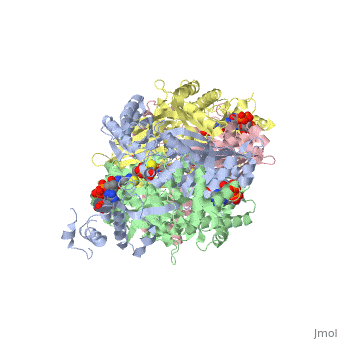From Proteopedia
proteopedia linkproteopedia link Significance of OspC in Lyme Disease
Lyme disease is a progressive multisystem disorder that produces a primary infection (erythema migrans), at an early stage, at the site of bite by Ixodes tick carrying spirochetes (Borrelia burgdoferi) and may spread to secondary sites (e.g. heart, nervous system, joints), if left untreated. Outer Surface Proteins (e.g. OspA, OspB and OspC) play a vital role in this infection process. While inside the vector, presence of OspA is prominent while OspC is unexpressed on the spirochete outer membrane. When spirochete invades the host body, OspA is suppressed and an upregulation of OspC occurs due to an induction in OspC synthesis (the surface proteins are co-regulated on the mRNA level). This upregulation of OspC occurs partially due to differential temperature change (the optimal temperature being 32-37 degree Celsius) in the host body. However, OspC expression decreases after two days (time needed for spirochete transmission) of feeding. This implies that OspC is a vital protein supporting the transmission of the antigen in the host body (Kumaran et al. 2011). Furthermore, the tick-borne infection was shown to be prevented upon addressing active (Gilmore et al. 1996) or passive (Mbow et al. 1999) immunization with various OspC formulation in experimental mammals. As a result, OspC is th eprotein of interest that is to be studied.
The highly variable OspC gene is located on a 27 kb circular plasmid and encodes for lipprotein, which contains an 18 amino acid sequence. This amino acid sequence changes after processing and lipidation at the amino proxymal Cys residue. The high variability of OspC gene makes OspC protein very polymorphic which varies among the major groups and even within different locations (Kumaran et al. 2011). The three dimensional structure of OspC consists of five helices and to anti-parallel beta sheeet per monomer(Figre1). Not all strains of OspC are invasive to human (less than half). Even within invasive groups, the amino acid sequence varies (dissimilarities in building units), yet all of the invasive groups continue to share remarkably well reserved solvent structure (Figure 5) within the cavity (similarity in 3D structure and folding leading to similar function). Another point of significance to be added is that regions in all invasive species are likely to be partially occupied by heavy trace ios(Kumaran et al. 2001). One of the most prominent differences between OspC of invasive strands of spirochete has a strong negative electrostatic potential region which exists with in its two fold axis (Figure 2).
| Anything in this section will appear adjacent to the 3D structure and will be scrollable.
|

